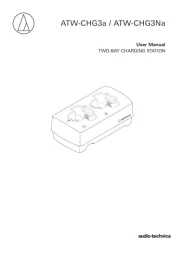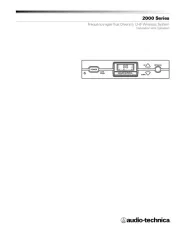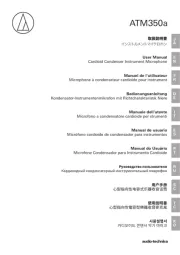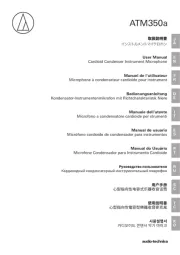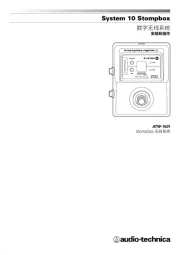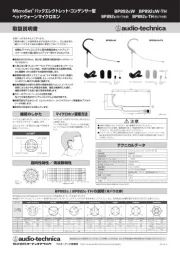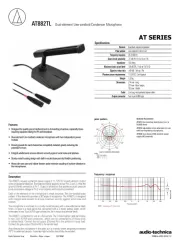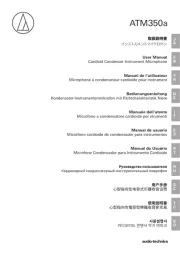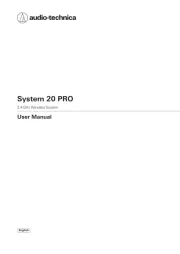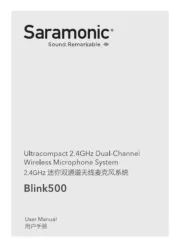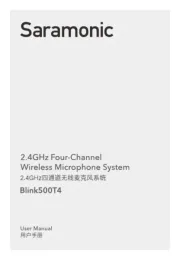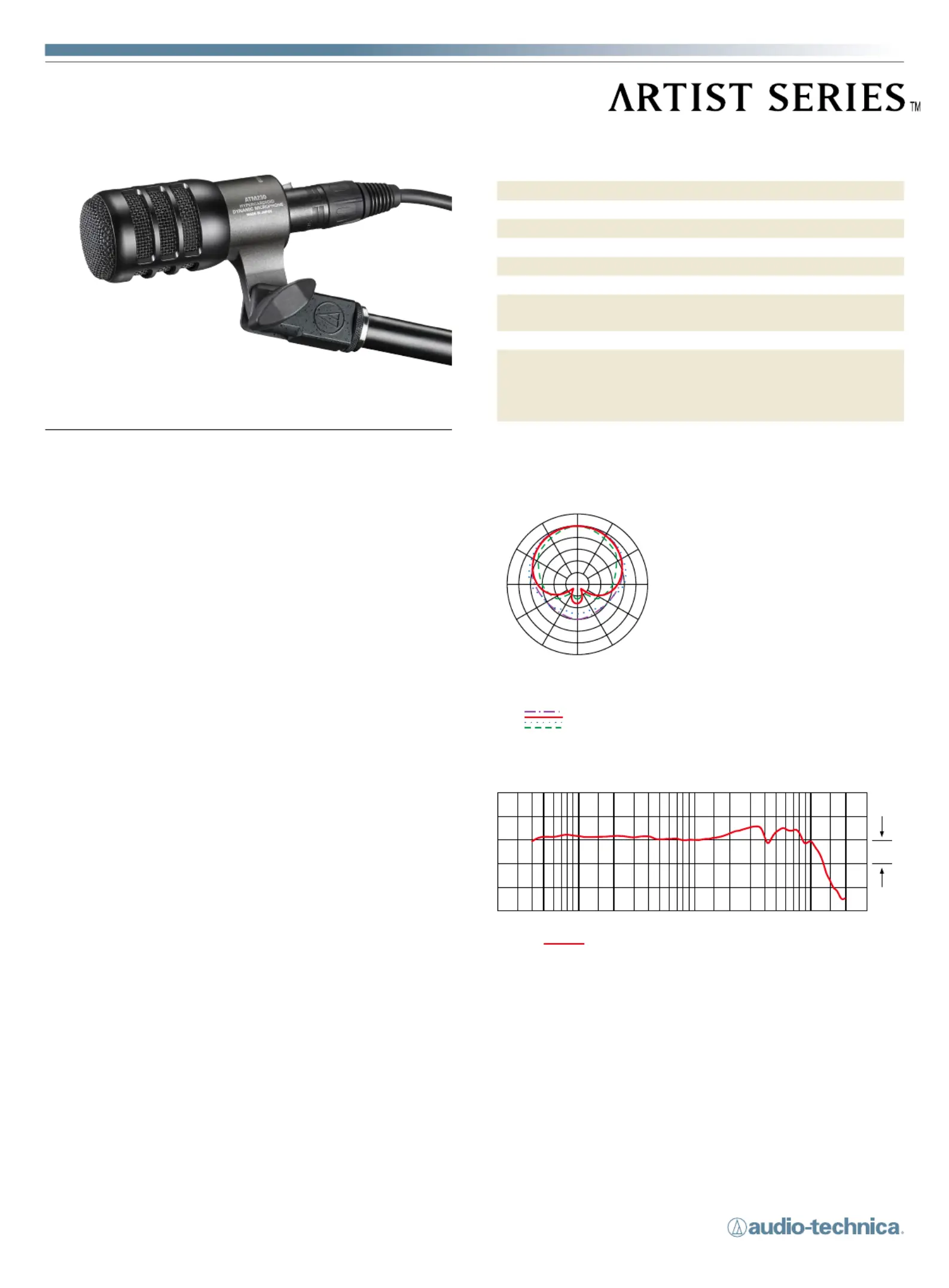
Hypercardioid Dynamic Instrument Microphone
SCALE IS 5 DECIBELS PER DIVISION
Polar pattern Hypercardioid
Frequency response 30-12,000 Hz
Open circuit sensitivity -54 dB
Dimensions 82.5 mm - long,
38.0 mm - maximum diameter
Output connector Integral 3-pin XLRM-type
Accessories furnished AT8665 drum mount for 5/8"-27 threaded
5/8"-27 to 3/8"-16 threaded adapter;
•Tailoredtocapturesoundfromrackandfloortoms,snaredrumsand
otherpercussioninstruments
•HandlesveryhighSPLatcloserange
•Hypercardioidpolarpatternreducespickupofsoundsfromthesides
andrear,improvingisolationofdesiredsoundsource
•Rareearthmagnetforimprovedoutputandtransientresponse
•Low-profiledesignpermitsversatileplacementarounddrumkit
•Rugged,all-metalconstructionensuresdependableperformancein
live-musicandstudioapplications
•Integral5/8"-27threadedstandclampworkswithincludeddrum
mounttopermitmountingofmictodrumrim
The ATM230 is a dynamic microphone with a hypercardioid polar pattern. It
is designed specically for musical instrument pickup in the studio and on
The hypercardioid polar pattern of the microphone is more sensitive to
sound originating directly in front of the element, making it useful for
controlling feedback and reducing pickup of unwanted sounds.
The output of the microphone is a 3-pin XLRM-type connector.
The microphone is enclosed in a rugged housing and is outtted with an
integral 5/8"-27 threaded stand clamp. The included AT8665 drum mount
screws into the stand clamp to permit mounting of the ATM230 to the rim
of a drum. A soft protective pouch is also included.
Output is low impedance (Lo-Z) balanced. The signal appears across Pins 2
and 3; Pin 1 is ground (shield). Output phase is “Pin 2 hot”- positive acoustic
pressure produces positive voltage at Pin 2.
To avoid phase cancellation and poor sound, all mic cables must be wired
consistently: Pin 1-to-Pin 1, etc.
Avoid leaving the microphone in the open sun or in areas where
temperatures exceed 43° C for extended periods. Extremely high humidity
Take care to keep foreign particles from entering the windscreen. An
accumulation of iron or steel filings on the diaphragm, and/or foreign
material in the windscreen's mesh surface, can degrade performance.

